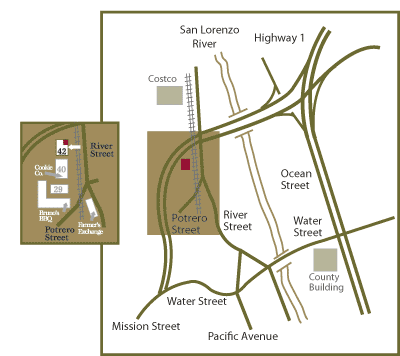Exercise Therapy
Personalized instruction
Benefits of exercise therapy
My philosophy of exercise
Exercise guidelines for weight loss and maintenance
Keys to getting adequate activity and exercise
Getting cardio during neck and back pain
Differentiating injury from post-exercise soreness
Exercise plays an important role in recovery from injury and pain conditions. And exercise is nature’s best medicine–no drug or medical procedure works as well to maintain and promote health and well-being!
My personalized exercise prescription and instruction includes:
- One-on-one instruction to address your individual medical conditions, abilities, needs, and goals.
- Simple and practical home exercises you can perform safely on your own, without expensive gym memberships and equipment.
- Focus on key body regions where injuries typically start: core stabilization (including low back, neck and pelvic floor strengthening), scapular/shoulder girdle stabilization; forearm/wrist strengthening; hip joint flexibility and strengthening; knee-cap re-alignment, and ankle strengthening
- Safe methods of stretching for flexibility, and how to avoid de-stabilizing joints, which can result from inappropriate stretches
- Breath and body awareness techniques for relaxing tight muscles, and improving posture and ergonomics, and reducing mental and emotional stress that contribute to tight muscles, pain, and injuries
- Guidance regarding cardiovascular exercise, exercise classes, sports and recreational activities that are safe and appropriate while you are recovering from injury
- Return-to-play assessment for injured athletes.
The benefits of therapeutic exercise for injury recovery include:
- Strengthens and relaxes muscles and connective tissue
- Increases flexibility of muscles and tendons
- Stabilizes and lubricates joints
- Promotes healthy blood flow and lymphatic drainage, bringing nutrients and oxygen to injured tissues, and carrying away waste products and debris from tissue damage
- Re-trains the nervous system to function efficiently and effectively
- Promotes tissue repair and growth by progressive challenge.
- Increases pain thresholds and tolerance. Exercise is a work-out for your body’s own ability to control pain.
- Improves posture, coordination, and balance–thereby reducing the risks of injury
- Improves immune system function
- Reduces stress and releases mood-elevating neurotransmitters–makes us feel good!
Exercise therapy also prepares us for more challenging cardiovascular and strength-training workouts–the cornerstone of health at any age! Regular aerobic and strength conditioning improves cardiovascular health, metabolism and immune system function, thereby and preventing both chronic and infectious disease. Reaping the benefits of physical activity and exercise is one of the keys to a long, healthy and happy life.
My science-based philosophy of exercise is that motion is life! Exercise is the best medicine on the planet, and physical activity is essential for health happiness and well-being. Our bodies were meant to be moved and used, at work and at play!
I draw on my training, study and clinical experience with various styles of therapeutic exercise, including yoga, Pilates, and sports conditioning, and traditional Chinese exercises including taiji and qi gong, to assist in injury recovery and prevention.
Do you feel you’ve been injured by exercise, or have not found exercises helpful in recovering from pain? Indeed, pain during exercise can result from:
- over-training (too much too fast, inadequate rest between sessions)
- inappropriate choices of exercise (for example, sit-ups can aggravate disc injuries in the lumbar spine; therabands can aggravate tendonitis)
- lack of variety (leading to repetitive strain injuries, muscle imbalances)
- inadequate one-on-one guidance, resulting in poor form and technique
- under-training: inconsistency, holding back, and giving up too quickly can give the wrong impression that exercise isn’t helpful. No, exercise does not always work like pain medication to quickly mask symptoms. But for many patients in chronic pain, consistent, sustained, challenging and appropriate exercise is essential for long-term recovery.
Also, normal post-exercise Delayed Onset Muscle Soreness (DOMS) can be mistaken for injury from inappropriate or excessive exercise, which can lead to patients quitting otherwise beneficial exercises or dropping out of care. By understanding how to tell DOMS from injury pain, we can better recognize when an activity needs to be ceased or modified to prevent further injury, versus when it should be continued to strengthen a weak area.
To get the most benefit from exercise therapy, working one-on-one with an experienced trainer is essential until the patient can safely continue on their own. That’s why I include individualized exercise instruction whenever safe and appropriate in my treatment plans.
One-on-one exercise-only personal training sessions are also available. To schedule exercise instruction, you may contact us.
Anthony Von der Muhll, L.Ac., DNBAO is a Certified Personal Trainer through the American College of Sports Medicine— the “gold standard” in personal training certification. He has also worked as a physical therapy aide and athletic training assistant in clinical and school settings.


